Properly aligning your rim brake alloy wheelset is crucial for peak performance and a smooth ride. Here’s a step-by-step guide to aligning the Trifox 29er Alloy Mountain Bike Wheelset WM823.
Step-by-Step Alignment Guide
1. Check for Trueness: Place your bike on a stand and spin the wheel. Observe the rim from above to spot any wobbles. If the rim moves side-to-side, it needs truing. A truing stand can help, but you can also use the bike’s brake pads as a reference.
2. Adjust Spoke Tension: Use a spoke wrench to adjust the tension. Turn the nipple clockwise to tighten and counterclockwise to loosen. Focus on small increments. Tighten the spokes on the opposite side of the wobble. For vertical alignment, adjust every few spokes to ensure even tension.
3. Ensure Proper Brake Pad Alignment: Loosen the brake pad mounting bolt and align the pad so it’s parallel to the rim and strikes the center. Make sure the pad clears the tire and isn’t too close to the edge of the rim. Tighten the bolt once aligned.
Tips for Peak Performance
Regular Inspections: Check your wheelset for trueness and spoke tension regularly. Look for any signs of wear or damage.
Cleanliness: Keep the rims and brake pads clean to prevent dirt buildup, which can affect braking efficiency.
Proper Tools: Invest in quality tools like a truing stand, spoke wrench, and torque wrench for precise adjustments.
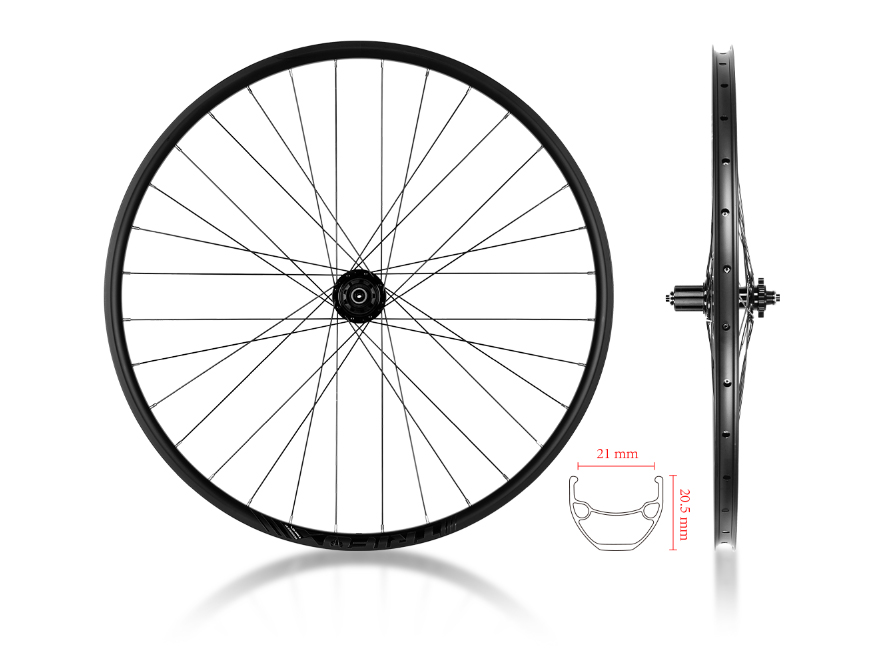
Benefits of a Well-Aligned Wheelset
A well-aligned wheelset like the Trifox WM823 enhances braking efficiency, ensuring that your bike stops smoothly and safely. Proper alignment also improves ride smoothness, reducing vibrations and providing a more comfortable experience.
In conclusion, aligning your rim brake alloy wheelset is essential for maintaining peak performance. Regular checks, proper tools, and careful adjustments will help you enjoy the utmost efficiency and smoothness in your rides. With the Trifox 29er Alloy Mountain Bike Wheelset WM823, you can trust in durability and performance to elevate your cycling adventures.

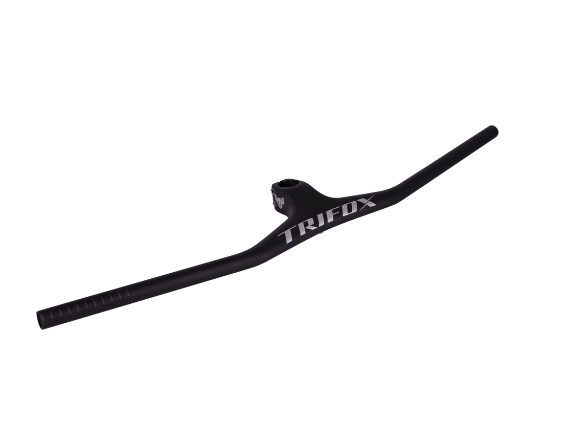
Upgrading your bike with a 3K weave handlebar is an excellent way to enhance performance, comfort, and aesthetics. Here’s how to make the most of this upgrade:
Choose Quality: Start with a high-quality option like the Trifox Carbon Integrated Handlebar RHB200. The 3K weave carbon fiber ensures superior strength and lightweight properties, reducing overall bike weight for better handling.
Compatibility: Ensure the new handlebar fits your bike’s stem and fork. Check the clamp diameter to match your current setup, commonly 31.8mm or 35mm.
Remove Old Handlebars: Safely remove the old handlebars by loosening the stem bolts. Carefully detach the brake levers, shifters, and any accessories.
Install the New Handlebar: Position the new 3K weave handlebar on the stem, ensuring it is centered and properly aligned with the front wheel. Tighten the stem bolts evenly to avoid any imbalance.
Attach Controls: Reinstall the brake levers and shifters, adjusting their positions for comfortable reach. Securely fasten all components.
Cable Management: Neatly reroute and secure the cables using zip ties or integrated channels if available. This ensures a clean look and prevents interference while riding.
Grip and Tape: Install new grips or wrap the handlebars with tape for added comfort and better grip. This also helps in absorbing vibrations during rides.
Test and Adjust: Take a test ride to ensure everything is securely in place and feels comfortable. Make any necessary adjustments to the positioning of controls or angle of the handlebars.
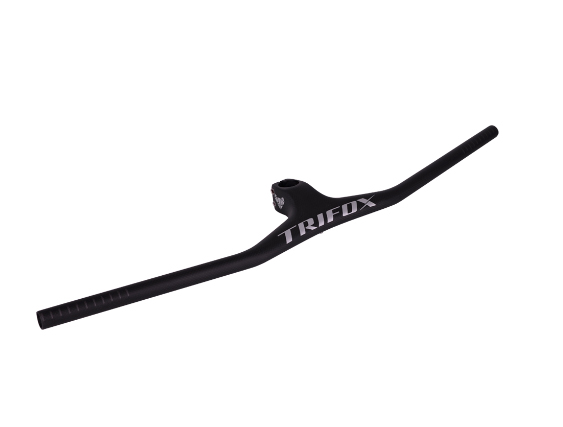
By following these steps, you can successfully upgrade your bike with a 3K weave handlebar like the Trifox Carbon Integrated Handlebar RHB200, enhancing both performance and aesthetics.
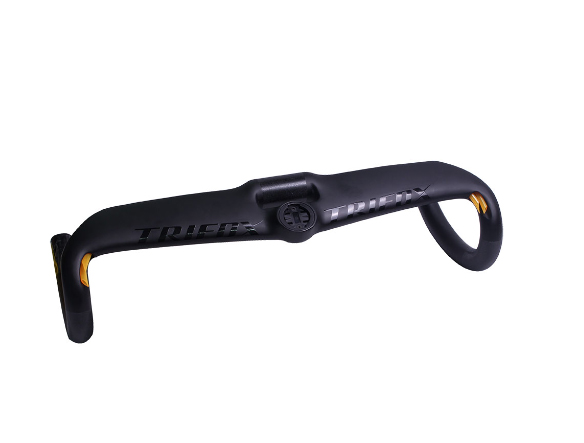
Selecting and installing the perfect bicycle drop bar can transform your riding experience, enhancing comfort, aerodynamics, and control. Here’s how to make the best choice:
Material: Opt for lightweight and durable materials like carbon fiber. The Trifox Aerofoil Section Carbon Drop Handlebar TC20AF is an excellent example, offering both strength and minimal weight.
Shape and Reach: Drop bars vary in shape (traditional, compact, ergo) and reach (distance from the bar to the brakes). Compact bars are great for smaller hands and provide easier access to controls. Ergo shapes offer enhanced comfort by fitting the natural curve of your hands.
Width: Match the width of the drop bar to your shoulder width for optimal control. Wider bars improve stability, while narrower bars reduce wind resistance, benefiting aerodynamic performance.
Drop: The drop (vertical distance between the top and bottom of the handlebars) affects your riding posture. A deeper drop suits more aggressive, aerodynamic positions, while a shallower drop is better for relaxed rides.
Installation: Installing drop bars can be straightforward. First, remove the old handlebars and clean the stem. Position the new bars and ensure alignment with the front wheel. Tighten the clamp bolts evenly. Attach the brake levers and shifters, ensuring comfortable reach. Finally, wrap the bars with handlebar tape for a secure grip.
Test Ride: After installation, take a test ride to adjust the positioning as needed. Ensure that the brake levers and shifters are within easy reach and that the overall setup feels comfortable.
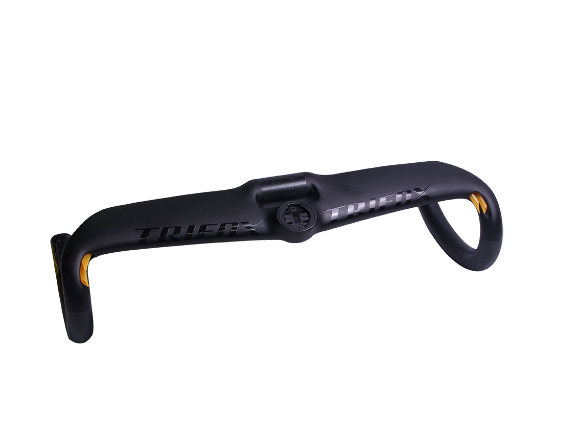
By carefully selecting and properly installing the right drop bar, like the Trifox Aerofoil Section Carbon Drop Handlebar TC20AF, you can significantly enhance your cycling performance and comfort.
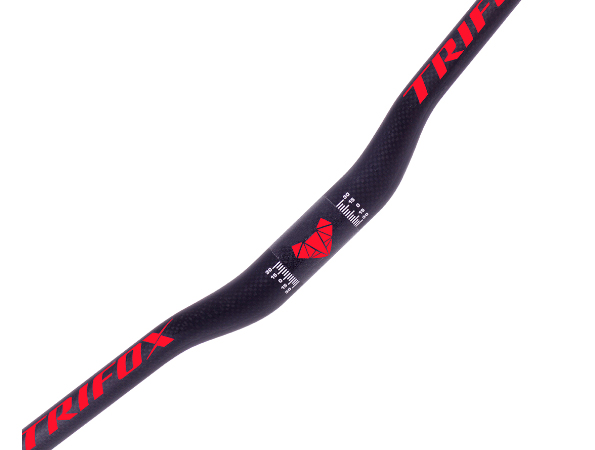
Choosing the best lightweight MTB handlebar for your mountain bike can significantly enhance your comfort, control, and overall riding experience. Here are some key considerations to guide you:
Material: The material of your handlebar plays a vital role in its performance. Carbon fiber handlebars, like the Trifox Carbon Riser Handlebar RHB300, are a top choice due to their superior strength-to-weight ratio. They also excel in absorbing trail vibrations, providing a smoother and more comfortable ride compared to aluminum counterparts.
Width: The width of the handlebar affects control and stability. Wider bars offer better leverage, making them ideal for rough terrains and technical trails. To determine the optimal width, consider your shoulder width and riding style. Cross-country riders might opt for narrower bars for agility, while enduro or downhill riders benefit from wider bars for enhanced control.
Rise and Sweep: The rise refers to the height difference from the center to the ends of the bar. Higher rise handlebars provide an upright riding position, which is beneficial for downhill and technical riding. Lower rise handlebars are preferred for cross-country biking. The sweep, or backward angle of the handlebar, impacts wrist comfort. More sweep can reduce wrist strain during long rides.
Clamp Diameter: Ensure that the handlebar's clamp diameter matches your stem size. Common sizes are 31.8mm and 35mm, with larger diameters offering increased stiffness and strength.
Weight: Since you're focusing on lightweight options, prioritize handlebars that minimize weight without compromising strength and durability. Carbon fiber is often the best material for achieving this balance.
Brand and Reviews: Lastly, consider reputable brands and read user reviews. A product like the Trifox Carbon Riser Handlebar RHB300 comes highly recommended for its quality and performance.
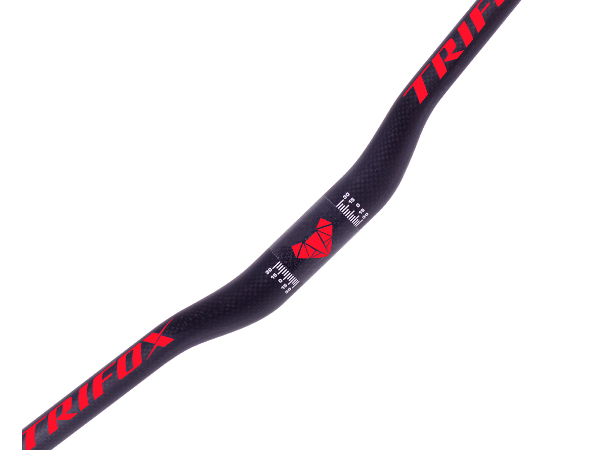
By considering these factors, you can find the perfect lightweight MTB handlebar that enhances your riding style and improves performance. For a reliable option, check out the Trifox Carbon Riser Handlebar RHB300.
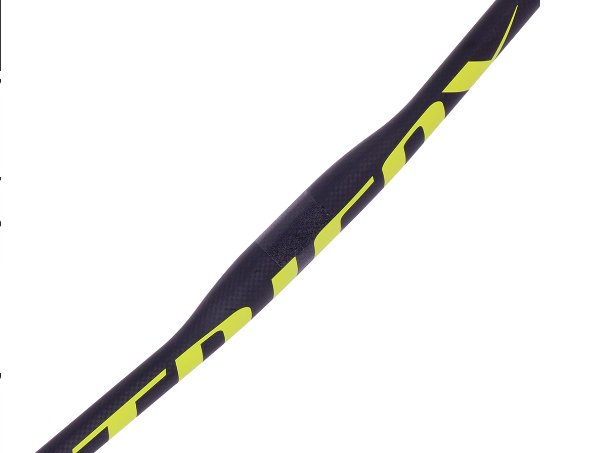
If you're an avid cyclist looking to improve your ride, you might want to consider upgrading to a flat bar. Unlike the traditional drop bars, flat bars offer a range of benefits that can enhance your cycling experience, especially for those who enjoy a more upright and comfortable riding position. Here’s why upgrading to a bicycle flat bar like the Trifox Carbon Flat Bar FHB100 could be the best decision you make.
1. Enhanced Comfort
One of the main reasons cyclists opt for flat bars is the enhanced comfort they provide. Flat bars allow for a more natural hand position, which can reduce strain on your wrists, shoulders, and back. This is particularly beneficial on longer rides or rough terrains where maintaining a comfortable posture is crucial.
2. Improved Handling and Control
Flat bars offer superior handling and control, making them ideal for urban commuting and off-road trails. The wider grip provides better leverage, allowing for more precise steering and easier maneuverability through tight spots or technical sections. The Trifox Carbon Flat Bar FHB100 is designed to optimize control while remaining lightweight.
3. Versatility
A flat bar setup is incredibly versatile and can adapt to various cycling styles. Whether you’re riding in the city, tackling mountain trails, or enjoying casual weekend rides, a flat bar can accommodate your needs. It’s also easier to attach accessories like lights, bells, or GPS devices to a flat bar, adding to its practicality.
4. Durability
Upgrading to a high-quality flat bar, such as the Trifox FHB100, ensures greater durability and longevity. Made from premium carbon fiber, the FHB100 is not only strong but also exceptionally lightweight, reducing the overall weight of your bike without sacrificing performance.
5. Ease of Installation and Maintenance
Switching to a flat bar is relatively straightforward and can usually be done with basic tools. Additionally, flat bars tend to require less maintenance compared to drop bars, as they have fewer components that can wear out or need adjustment.
6. Aesthetic Appeal
For many cyclists, the sleek, minimalist look of a flat bar is more appealing than the more complex appearance of drop bars. The Trifox Carbon Flat Bar FHB100, with its clean lines and refined finish, can give your bike a modern, streamlined look.
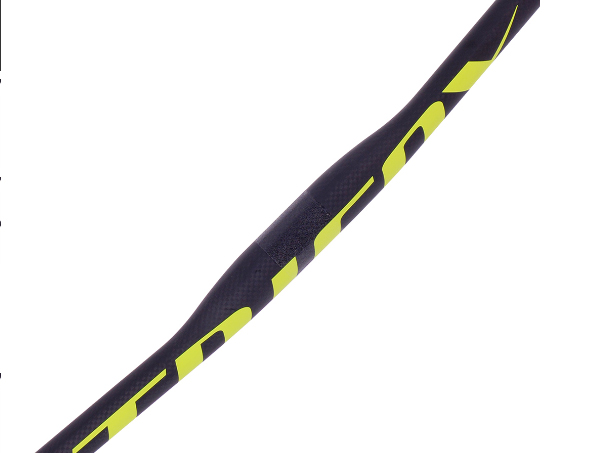
In conclusion, upgrading to a bicycle flat bar like the Trifox Carbon Flat Bar FHB100 offers numerous benefits, from enhanced comfort and improved handling to greater durability and aesthetic appeal. Whether you’re looking to tackle new terrains or simply make your daily commute more enjoyable, a flat bar could be the perfect upgrade to elevate your cycling experience.
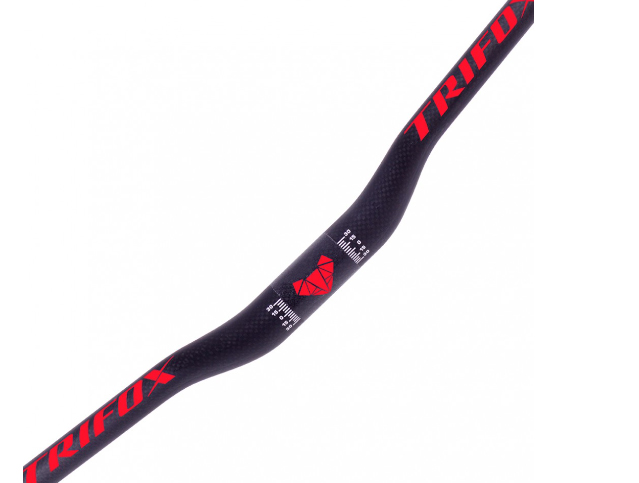
When it comes to cycling, the handlebar is more than just a steering mechanism—it's a critical component that affects control, comfort, and performance. A robust handlebar can elevate your riding experience, making it essential for cyclists of all levels to understand what constitutes a durable and reliable handlebar. Here’s what you need to know about robust handlebars and why they matter, using the Trifox Carbon Riser Handlebar RHB300 as an example.
1. Material Quality
The foundation of a robust handlebar lies in its material. High-quality materials like carbon fiber offer a blend of strength and lightweight properties. The Trifox Carbon Riser Handlebar RHB300 is made from premium carbon fiber, providing excellent durability without adding unnecessary weight. This balance is crucial for maintaining bike agility and rider comfort.
2. Design and Construction
A well-designed handlebar should distribute stress evenly to prevent weak points that could lead to failure. The Trifox RHB300 features a carefully engineered design that enhances structural integrity. Its riser shape also contributes to better control and ergonomics, allowing for a more comfortable and responsive ride.
3. Ergonomics
Comfort is key during long rides, and a robust handlebar should cater to ergonomic needs. The rise and sweep of the handlebar affect hand positioning and overall comfort. The Trifox RHB300 is designed with a thoughtful rise and back-sweep angle, ensuring a natural wrist position and reducing fatigue on extended rides.
4. Vibration Dampening
Cycling over rough terrain can transfer vibrations to your hands and arms, leading to discomfort or even injury. A robust handlebar like the Trifox RHB300 incorporates vibration-dampening properties inherent in carbon fiber. This helps absorb shocks and vibrations, resulting in a smoother and more enjoyable ride.
5. Strength and Durability
To withstand the rigors of various terrains, a handlebar must be strong and durable. The Trifox RHB300 has been subjected to rigorous testing to ensure it meets high standards of strength and longevity. This reliability means you can trust it to perform under demanding conditions, whether you're tackling mountain trails or rough urban streets.
Why Should You Care?
Investing in a robust handlebar is not just about enhancing your bike’s aesthetics. It directly impacts your safety, comfort, and performance. A high-quality handlebar ensures better control and stability, reducing the risk of accidents. Comfort enhancements from ergonomic designs reduce fatigue, allowing you to ride longer and more enjoyably. Moreover, the durability of a robust handlebar means fewer replacements and repairs, saving you money in the long run.
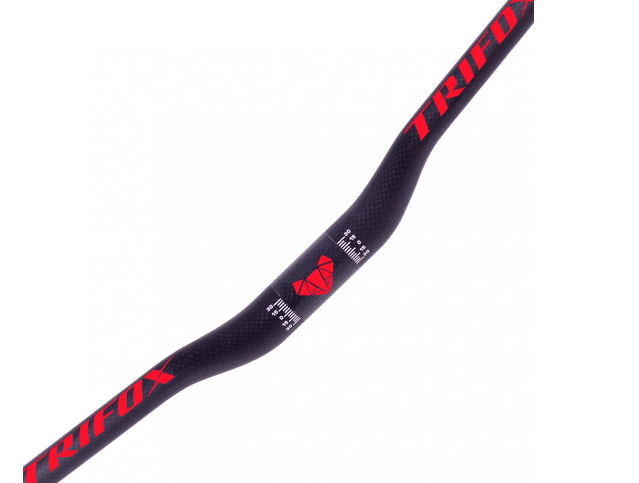
In conclusion, understanding what makes a handlebar robust and investing in a quality product like the Trifox Carbon Riser Handlebar RHB300 can significantly enhance your cycling experience. Prioritize quality, and you'll reap the benefits of a safer, more comfortable, and more enjoyable ride.
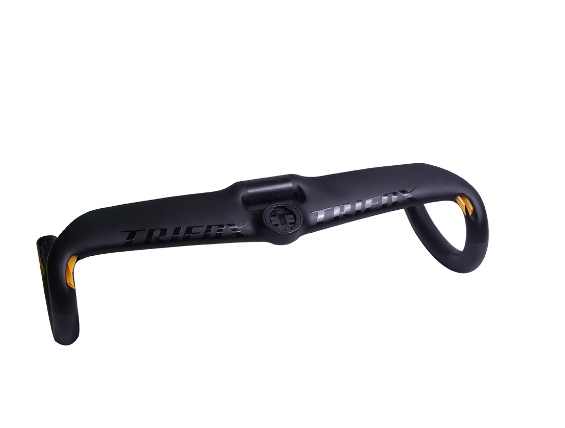
If you're looking to maximize your speed and efficiency on the road, installing aero bars on your bike is a great solution. Aero bars can significantly reduce wind resistance, allowing you to achieve faster speeds with less effort. Here's a step-by-step guide to installing road bike aero bars, using the Trifox Aero Aerofoil Section Carbon Drop Handlebar TC20AF.
1. Gather Your Tools and Materials
Before you begin, ensure you have all necessary tools and materials:
Aero bars (like the Trifox TC20AF)
Hex keys
Torque wrench
Handlebar tape
Scissors or a knife
2. Prepare Your Handlebar
First, remove any existing handlebar tape from your current handlebars. This will give you a clean surface to work with and prevent any obstruction during installation. Make sure to clean the handlebar thoroughly to remove any residue or debris.
3. Position the Aero Bars
Next, place the aero bars on the handlebar in the desired position. Typically, they should be placed centrally on the top section of the handlebar. Ensure they are symmetrical and aligned correctly. Adjust the angle to a comfortable position that allows you to maintain an aerodynamic posture.
4. Secure the Aero Bars
Using the hex keys, tighten the bolts to secure the aero bars in place. It's crucial to follow the manufacturer's torque specifications to avoid over-tightening, which can damage the carbon handlebar. If you don't have the specifics, generally, a torque setting of 5-6 Nm is recommended for carbon components.
5. Adjust the Armrests and Extensions
Most aero bars come with adjustable armrests and extensions. Set the armrests at a width and height that provides comfort and support for your forearms. Adjust the extensions so that your hands can reach the shifters and brakes comfortably while maintaining an aerodynamic position.
6. Rewrap the Handlebar Tape
Once the aero bars are securely installed and adjusted, rewrap the handlebar tape. Start from the ends of the handlebar and work your way up, ensuring the tape is tight and evenly wrapped. Cut off any excess tape and secure the ends with finishing tape.
7. Test Ride and Final Adjustments
Take your bike for a test ride to ensure everything feels comfortable and secure. Pay attention to how the aero bars handle and make any minor adjustments as needed. It may take a few rides to fine-tune the setup for maximum comfort and efficiency.

Installing aero bars, such as the Trifox Aero Aerofoil Section Carbon Drop Handlebar TC20AF, can greatly enhance your cycling performance by reducing aerodynamic drag. Follow these steps to achieve a secure and comfortable installation, and enjoy the benefits of improved speed and efficiency on your next ride.
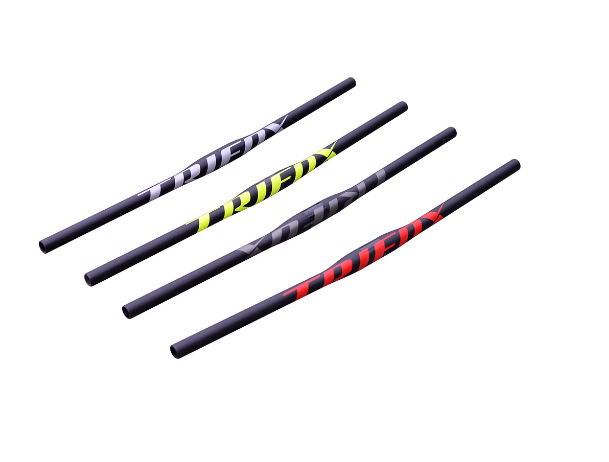
When it comes to enhancing your cycling experience, handlebars play a crucial role. If you're contemplating whether to switch to a flat bar, here are some compelling reasons why it might be the right choice for you.
1. Enhanced Control
Flat bars offer superior control, especially in technical terrains. The wider grip allows for better leverage, making it easier to navigate sharp turns, rough trails, and obstacles. This increased control is particularly beneficial for mountain bikers and commuters who face varying conditions daily.
2. Improved Comfort
A flat bar promotes a more upright riding posture, which can significantly reduce strain on your back, neck, and wrists. This ergonomic advantage makes long rides more comfortable, allowing you to enjoy your journey without discomfort.
3. Versatility
Flat bars are versatile and suitable for various types of riding, from urban commuting to cross-country adventures. Their straightforward design makes mounting accessories like lights, GPS units, and phone holders easier, enhancing your overall riding experience.
4. Durability and Safety
Flat bars are typically more robust than their drop-bar counterparts, providing increased durability. Their design also offers better stability and control, contributing to a safer ride, especially when navigating uneven or unpredictable surfaces.
Top Pick: Trifox Carbon Flat Bar
If you're looking for a high-quality flat bar, check out the Trifox Carbon Flat Bar FHB100. Known for its lightweight yet sturdy construction, this flat bar enhances both control and comfort, making it a great upgrade for your bike.
Conclusion
Switching to a flat bar can provide better control, improved comfort, and greater versatility, making it a worthwhile consideration for various types of cyclists. Whether you're tackling off-road trails or navigating city streets, the benefits of a flat bar are clear. Upgrade to a flat bar and experience the difference it can make in your riding experience.
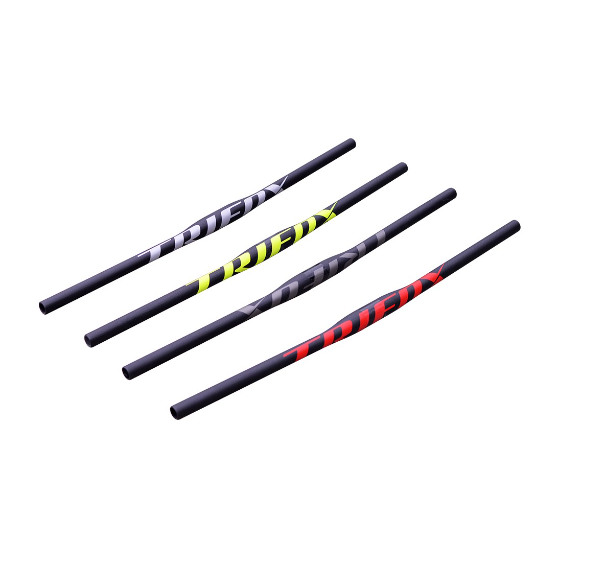
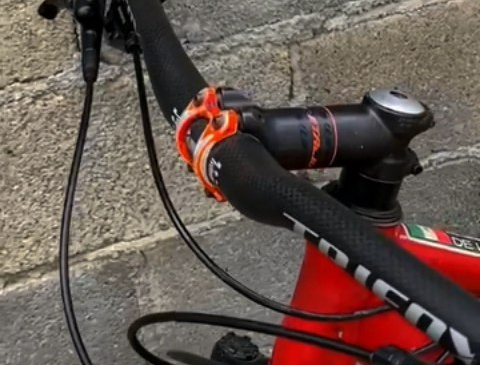
When it comes to optimizing your mountain bike, selecting the right components can make a significant difference in your riding experience. Among the many upgrades available, a carbon riser handlebar stands out for its numerous benefits. Let's delve into why choosing a carbon riser handlebar could be the perfect enhancement for your mountain biking adventures.
Lightweight and Strong
One of the most compelling reasons to opt for a carbon riser handlebar is its lightweight nature. Carbon fiber is known for its outstanding strength-to-weight ratio, making it an ideal material for handlebars. By reducing the weight of your bike's front end, you can achieve better maneuverability and control, especially on technical trails. This weight reduction is not just about performance; it also means less fatigue during long rides, allowing you to push your limits with greater ease.
Enhanced Vibration Dampening
Mountain biking often involves navigating rough terrains that can transmit a lot of vibration to your hands and arms. A carbon riser handlebar excels in damping these vibrations, offering a smoother and more comfortable ride. This feature is particularly beneficial during extended rides or on trails with constant bumps and jolts.
Improved Riding Position
Riser handlebars are designed to elevate the rider’s position, providing a more upright stance. This posture not only enhances comfort but also improves visibility and control over the bike. For riders who prefer a laid-back yet confident riding style, a riser handlebar is indispensable. The increased height also facilitates easier handling during descents and sharp turns.
Aesthetic Appeal
Let’s not overlook the aesthetic advantage. Carbon riser handlebars have a sleek, modern look that can instantly upgrade the appearance of your bike. With clean lines and a premium finish, they add a touch of sophistication to your setup.
Durability
Carbon fiber is incredibly durable and resistant to fatigue, making it a reliable choice for demanding off-road conditions. Unlike aluminum handlebars, which can bend or corrode over time, carbon handlebars maintain their integrity and performance for the long haul.
Top Pick: Trifox Carbon Riser Handlebar
If you're considering upgrading to a carbon riser handlebar, check out the Trifox Carbon Riser Handlebar RHB300. Known for its exceptional quality and engineering, this handlebar offers all the benefits mentioned above. Designed with precision, it promises to enhance your mountain biking experience by combining strength, flexibility, and style.
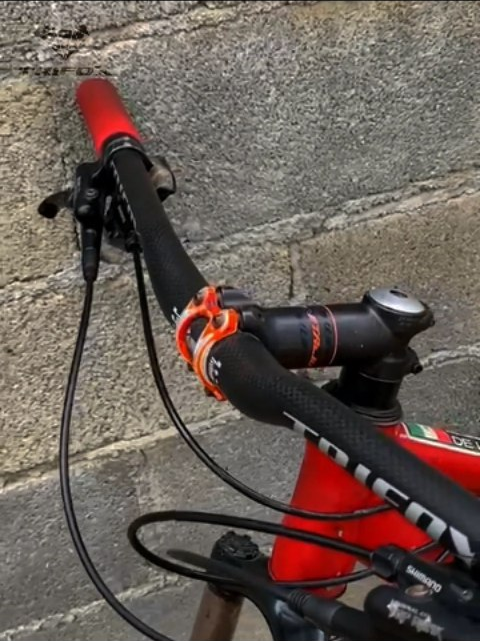
Conclusion
Choosing a carbon riser handlebar for your mountain bike is more than just a performance upgrade; it’s an investment in comfort, durability, and overall riding enjoyment. Whether you're a seasoned rider or a beginner looking to improve your setup, the advantages of a carbon riser handlebar are clear.
From reduced weight and enhanced vibration dampening to improved riding position and aesthetic appeal, a carbon riser handlebar is a versatile component that can significantly elevate your mountain biking experience. Make the switch today and feel the difference on your next ride!
























































